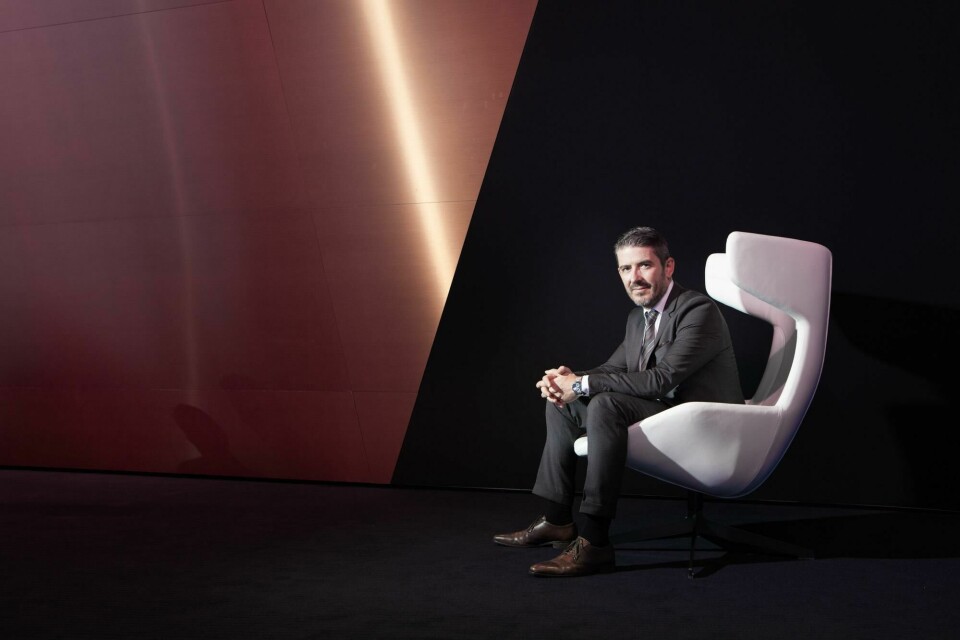
The Designers Pt 18: Gilles Vidal, Peugeot
“We need to make sacrifices in the way we design things where you can’t see it, and really emphasise what the client can see”
“We need to make sacrifices in the way we design things where you can’t see it, and really emphasise what the client can see”
I’ve been at Peugeot almost five years now. We are not car designers any more, we are experience designers. Together with marketing and engineering we should create strong experiences for our customers because, after all, that is what design is about.
For example, how do you deliver a daily life experience with cars, phones or cameras that is stronger or more desirable and delightful to enhance your daily life? If we don’t do that, we fail at designing things. That’s what we are exploring with our Fractal concept, and sound design is a big part of that. If you slam the door it should feel quality and full, rather than hollow like a drum. Or the way the glovebox closes, or the ‘tick-tack’ sound of the indicator, which shouldn’t hammer in your head. A lot of things like that we have dealt with already. But beyond the physical, sound design can also be multi-sensory or psychological.

Peugeot Fractal interior
Since EVs will soon need their own sound signature due to forthcoming legislation, we’ve been working out how to cancel out the bad sounds a car can emit from friction with the ground and the mechanical elements. We created this anechoic shape [to cancel the echo] in the Fractal’s door panels, shapes we found in recording studios and experimental sound rooms. We generated a pattern we liked and told the computer where the nasty sounds in the car come from, and to get rid of them.

Peugeot Fractal’s anechoic door card
In the end, you have to accept the resulting adjustment of your pattern as the aesthetic. But if you really dislike that shape, you can move a parameter and auto-generate a new shape. Maybe you lose a bit of efficiency but if it’s amazing visually, maybe you can accept a bit of a compromise.
We always push our conceptual experiments very far and they can be spectacular, but what can we do with them? We want to bring a lot of this stuff into production and a lot of it is feasible. Sound design is one example. We know how to make good sound within a car now. Also, within interiors, the IP is just a multi-modal screen but we are pushing it further, from satnav to advanced driver assistance systems (ADAS).

Peugeot 208 GTi 30th anniversary
It can have more customisable displays and transition animations between the modes. They could be done in a fraction of a second, but that would be rough. We want those transitions to have some delight, like when you slide your finger down your phone and the display ‘bounces’ a little bit. It’s useless in a way, but the experience is great. These types of things will bring customer delight and those are kinds of things we are pushing to get into production.
The French are known to be very creative – and sometimes too creative and philosophical – so we need to adjust these things very carefully. I’m very aware of that danger of French creativity. When we put a small animation or special effect into production it will be adjusted to the millisecond, so it’s still super-sharp and perfect for all human perception, not just for a French person.

Interior of Peugeot 208 GTi 30th anniversary
‘Premium’ is not the right word for us, it’s about raising the standards of the brand so it feels on top of the generalised brands. It means taking a lead that is obvious in terms of quality and homogeneity, and that we deliver for the whole brand.
We’re raising the content we deliver to our clients in a dramatic way, even for little cars like the 108 (versus the previous 107). We’re putting in the investment where it pays off and is directly beneficial for the client. We have to put ourselves in the client’s shoes and ask: ‘What would I want to see if I bought this car with my own money?’ If you take that approach you can offer some amazing things. The next step for Peugeot, in terms of design language, will happen in 2016.

GIlles Vidal, Peugeot
Peugeot is a fairly small company. It’s quite compact and has a family spirit. Like everywhere else, designers compete to win projects but, while there is a spirit of competition, there is a greater feeling of a family working in one direction – for our clients. That applies throughout the company, beyond design to planning and marketing. We meet twice a week to discuss design. There is this proximity that is amazing.
The confidence within the company in design means we decide what the design will be for the Peugeot brand. When we have a big presentation of the cars with [Peugeot chairman] Carlos Tavares, because he has very good taste he will give some comments, but he also tells us: ‘It’s your call.’




